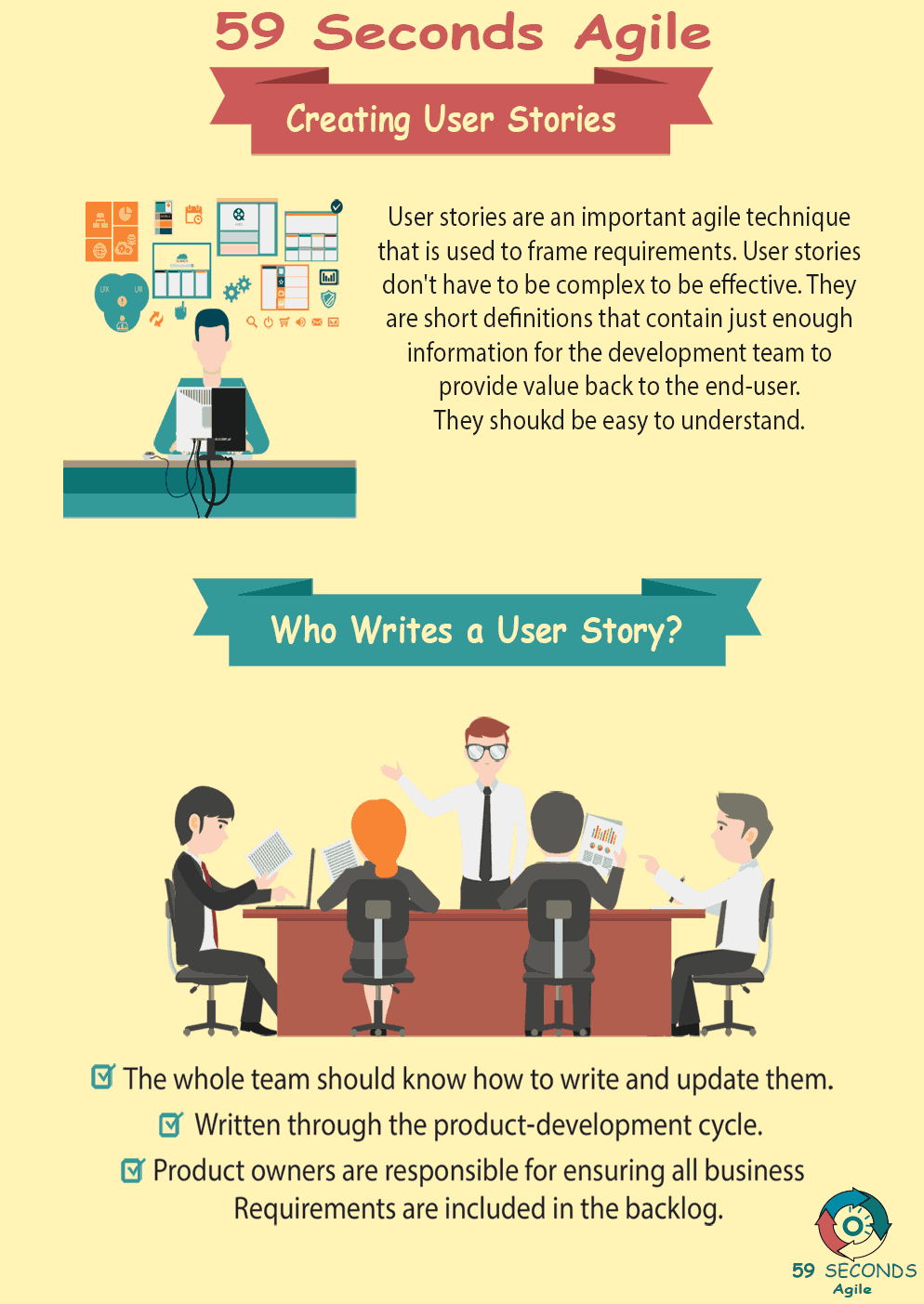What is the development team process for Making User Stories and creating the deliverables? What role do the developers play in this process?
Creating Agile Requirements
A 59 Seconds Agile Video Animation
Creating Requirements for Developers – Part 2
A 59 Seconds Agile Article
Making User Stories: Who is Responsible?
In short, the entire Scrum team is responsible for creating user stories. However, there is more nuance to this process. For many teams, it is best to allow one specific person to take charge in writing them. This responsibility often falls to the product owner, since he or she takes a more administrative role on an Agile team, and more directly works with stakeholders. Even if the product owner is the role who actually writes the stories, they require the expertise and feedback of other roles on the team.
The product owner usually does not understand all pieces of software development. Roles like developers and analysts must share their knowledge to create the best requirements. Developers, in particular, understand what goes on behind the user interface. They know what features take more effort to create, and which require less. What sounds quick and easy to other roles may be a red flag to developers and could be more difficult and complex. By getting opinions from all roles on the team, the person in charge of writing them can give accurate task estimates and break up larger work items as necessary.
Making User Stories: Hosting A User Story Meeting
For many teams, the best way to come up with user stories is to host a meeting to share information. Agile already promotes face to face communication, and a meeting with all members of a Scrum team allows everyone to voice their perspective. Instead of trailing out emails and memos over days and weeks, this allows the team to create requirements in a few hours or less. Even if a face to face meeting is impossible, there are other ways to get feedback from developers and other roles.
Before a Scrum team begins working on a feature, they must write the requirements for a feature. No one role on the team knows all of the details to write an informed story. Even if one person leads the process, everyone on the team is valuable to the process, developers especially. By writing requirements that contain all of the necessary parts, and describe unique behaviors, the Scrum team can work against the highest value requirements that give value to the development process.
Prev <— Continue Reading —> Next
Learn More: Writing Agile User Stories
User Stories Applied
A 59 Seconds Agile Book Review
User Stories Applied by Mike Cohn is one of our favourite books. The book starts with an overview into user stories, and details what they are and the different aspects of them. He then discusses how to go about writing a user story, and provides details of the INVEST criteria that can be used to determine if the requirement objectives are met. Next Mike gives an in depth discussion of who they are written for and where to begin when gathering the details for them. The book then discusses acceptance testing user stories, including how to go about specifying these criteria and the responsibilities of the development team and customers during this process.
Prev <— Continue Reading —> Next
Learn More: Writing Agile User Stories
Writing Agile Stories
A 59 Seconds Agile Infographic

Prev <— Continue Reading —> Next
Learn More: Writing Agile User Stories
Our Favourite Agile Books
We found these books great for finding out more information on Agile Scrum:

